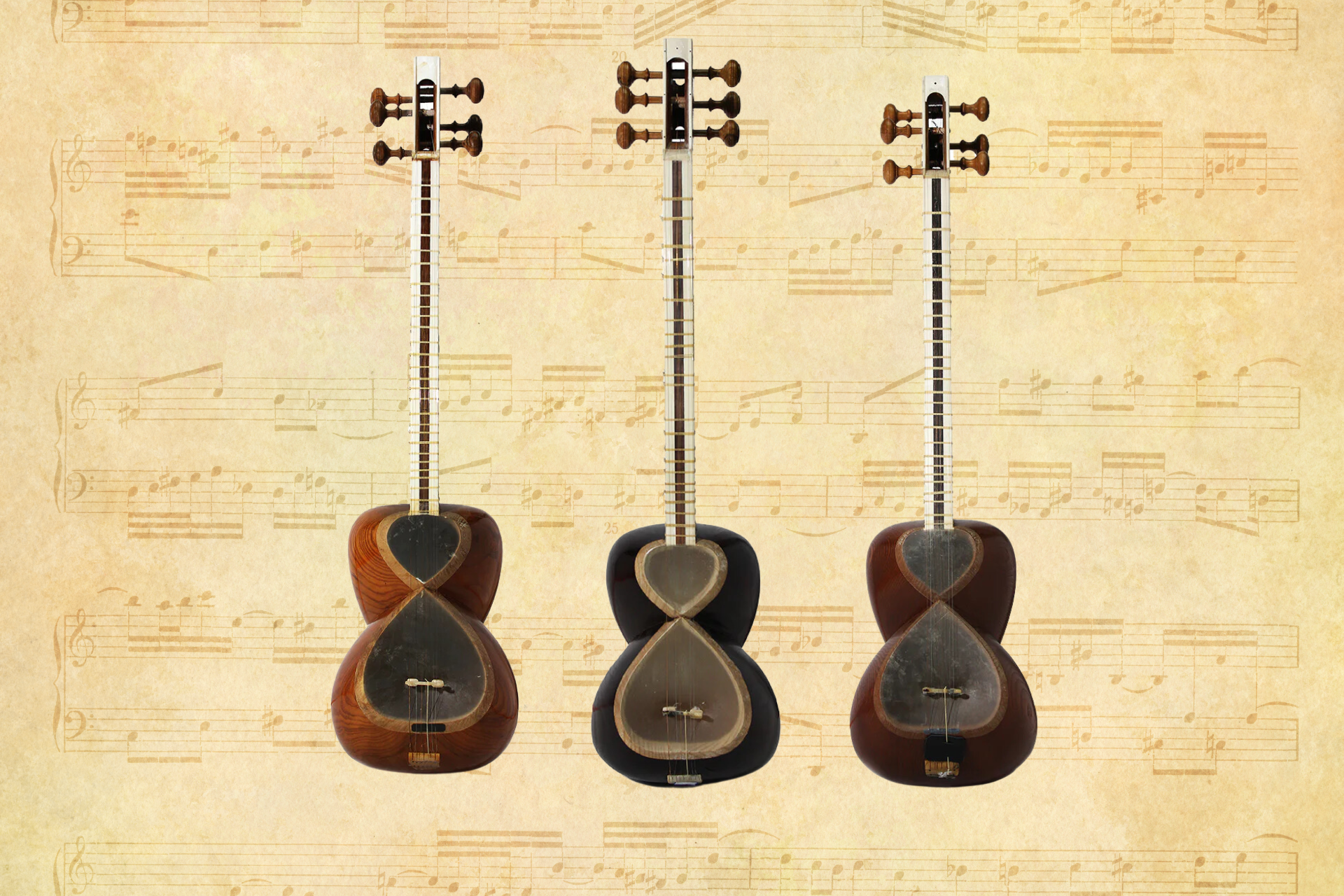General Articles
Exploring the diversity of Tar instruments
The tar is a long-necked, waisted lute that belongs to the family of plucked string instruments. It is one of the most popular and influential musical instruments in the Middle East, especially in Iran and Azerbaijan, where it is considered the sultan of instruments. The tar has a rich history, a distinctive structure, and a variety of styles and forms that reflect the diversity of its regions and cultures. In this article, we will explore some of the aspects that make the tar a unique and fascinating instrument.
The history of the tar
The origin of the tar goes back to the ancient Achaemenid and Sasanian periods, which date back to 2500 years BC. At that time, musical instruments were used in celebrations, rituals, and ceremonies of joy or mourning. Also, hearing music during separation was considered a particular pastime for kings and sovereign people.
The tar is derived from the tanbur, a type of long-necked lute that was widely used in ancient Persia and Central Asia. The word tar means “string” in Persian, and it originally signified the number of strings employed in the instrument. For example, dutar means “two strings”, setar means “three strings”, and chartar means “four strings”. However, this is no longer true, as some types of tar have more than four strings.
The modern form of the tar was developed in the 18th century by Iranian musicians and craftsmen who improved its sound range, structure, and appearance. The most notable figure in this process was Darvish Khan, a master musician who added a sixth string to the Persian tar and composed many pieces for it.
The tar became one of the most important musical instruments in Iran and the Caucasus, particularly for playing classical modes of Persian and Azerbaijani music, known as radifs and mughams. The tar also influenced other musical traditions and instruments in neighboring regions, such as Turkey, Armenia, Georgia, Uzbekistan, and Tajikistan.
The structure of the tar
The tar has a distinctive shape that resembles a figure 8 or an hourglass. The body of the tar is hollowed out of a single piece of mulberry wood and is covered with a thin membrane made of stretched lamb-skin or ox pericardium. The membrane acts as a resonator that amplifies the sound of the strings.
The neck of the tar is long and narrow and has a flat fingerboard that runs level to the membrane. The fingerboard has 25 to 28 adjustable gut frets that divide the strings into different intervals according to the tuning system. The neck ends in an elaborate pegbox with six or eleven wooden tuning pegs of different dimensions that add to the decorative effect.
The strings of the tar are made of metal and are attached to the body by ribs. The number and arrangement of the strings vary depending on the type of tar. The Persian tar has three courses of double “singing” strings that are tuned in unison: the first two courses in plain steel, and the third in wound copper. They are tuned root, fifth, octave (C, G, C). The Persian tar also has one “flying” bass string that runs outside the fingerboard and passes over an extension of the nut. It is wound in copper and tuned to G, an octave lower than the singing middle course.
The Azerbaijani or Caucasian tar has 11 strings in five paired courses plus a bass drone. The paired courses are tuned in unison or octaves: C-C#, G-G#, A-A#, B-B#, E-E. The bass drone is tuned to C or G. The Azerbaijani tar has a wider range than the Persian tar and can play chromatic notes.
The styles of playing the tar
The tar is played with a small brass plectrum that is held in the right hand and used in a combination of upstrokes and downstrokes along with occasional tremolos in both directions. The plectrum is called mezrab or mizrab in Persian or Azerbaijani.
The left hand presses the strings on the fingerboard to produce different notes according to the scale or mode that is being played. The player can also use various techniques such as slides, bends, vibratos, hammer-ons, pull-offs, harmonics, etc., to create expressive effects.
The style of playing the tar depends largely on the musical tradition and genre that it belongs to. In classical Persian music, the tar is used to play radifs, which are collections of melodic patterns that form the basis for improvisation and composition. The radifs are divided into seven main modes (dastgahs) and five secondary modes (avazes), each with its own mood, atmosphere, and structure. The tar player has to master the radifs and follow their rules and conventions while also adding their own creativity and interpretation.
In classical Azerbaijani music, the tar is used to play mughams, which are complex modal systems that combine elements of melody, rhythm, and poetry. The mughams are composed of three main parts: an introduction (tasnif), a development (maye), and a conclusion (reng). The tar player has to perform the mughams with skill and emotion, often accompanied by a singer and other instruments such as the kamancheh (spike fiddle) and the naghara (drum).
In folk and popular music, the tar is used to play various songs, dances, and tunes that reflect the culture and identity of different regions and communities. The tar player can adapt the instrument to different genres and styles, such as folk-rock, jazz, fusion, etc., and collaborate with other musicians from different backgrounds and influences.
Final words
The tar is a remarkable instrument that has a long and rich history, a distinctive structure, and a variety of styles and forms. It is a versatile instrument that can play different types of music, from classical to folk to modern. It is also a beautiful instrument that can produce captivating sounds, from soft and delicate to loud and powerful.
If you are interested in learning more about the tar or buying one for yourself or as a gift, you should visit our shop (Rhythm Music Shop), the best place to find high-quality tar instruments in Canada. Rhythm Music Shop is located in Markham and serves Markham, Richmond Hill, and the Greater Toronto Area. We also sell online and can ship to anywhere in Canada.

